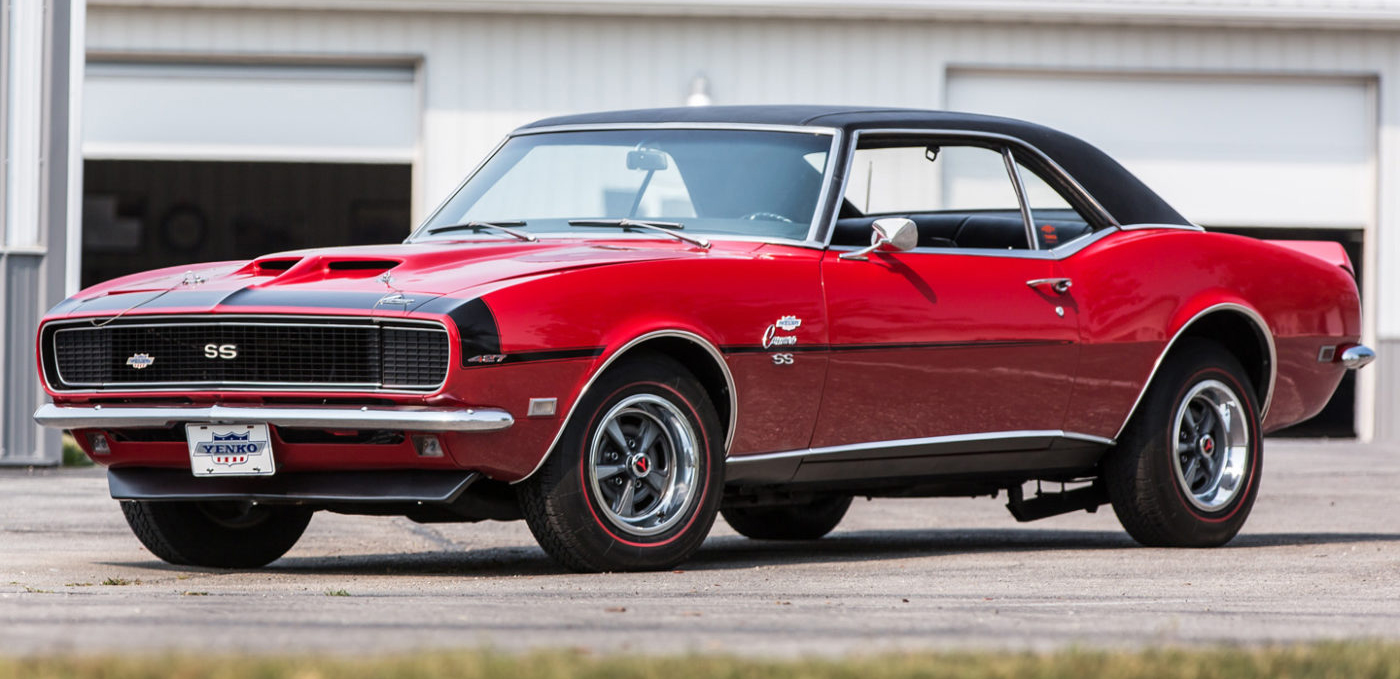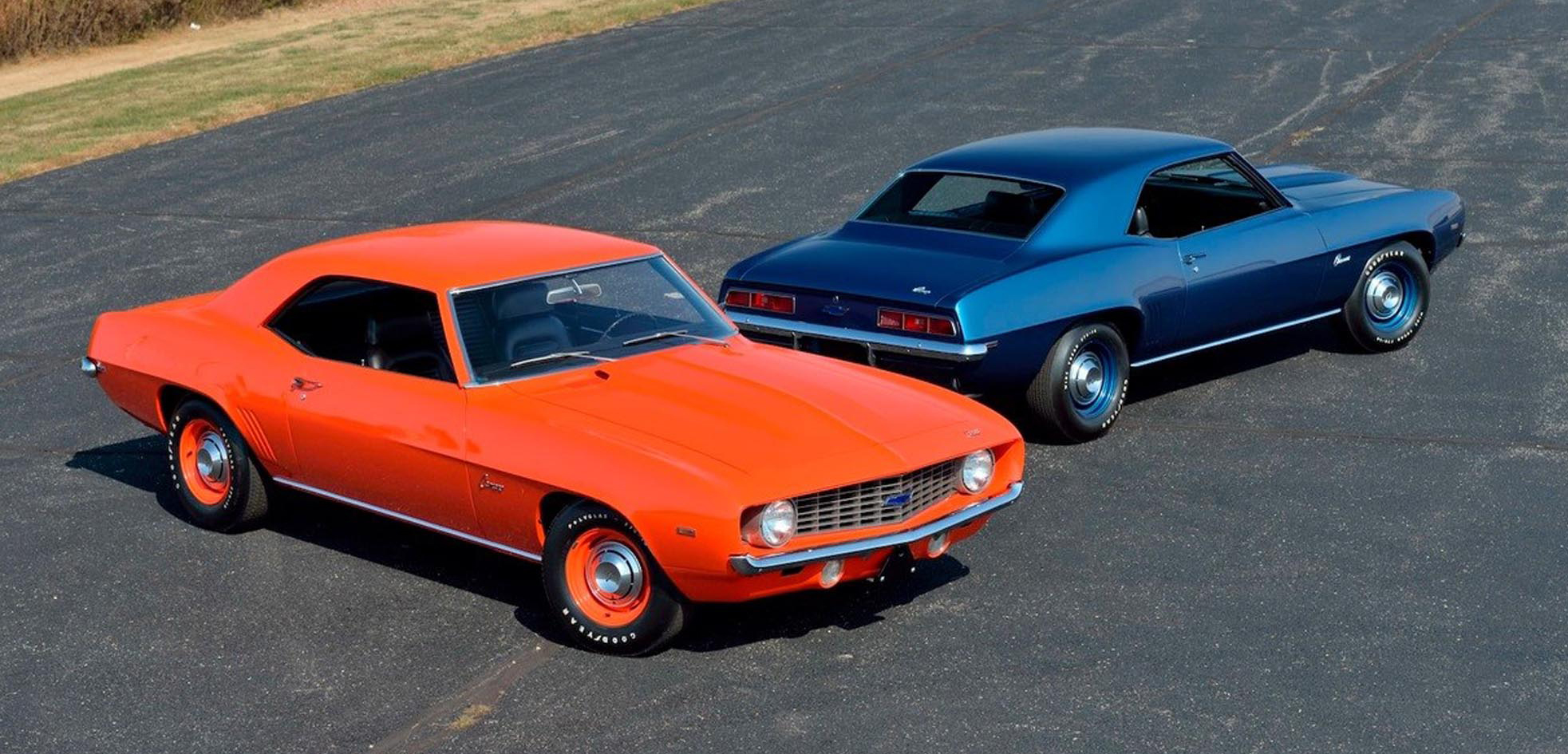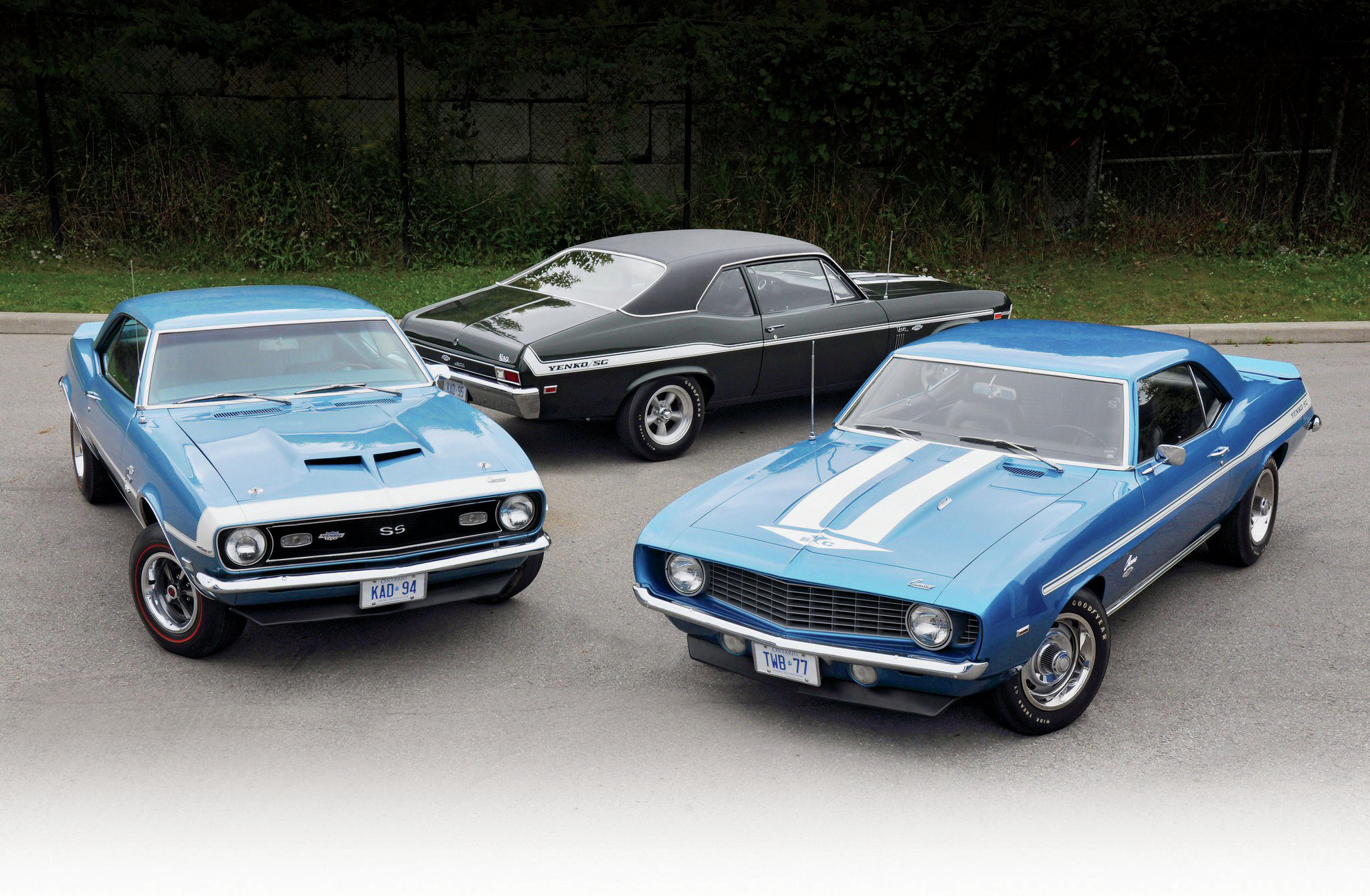
Solid Lifters: It’s as Much About the Cars as the Process
Car fans embrace performance, style, tech and many aspects of automobiles that fly under the radar. Among these fans are those who flock to displays of solid lifter cars … and for many of those fans, it is as much about the history and the cars, as the process and tech.
The dry tech answer to what solid lifters are is that they are solid pieces of metal between the cam lobe and pushrod. This type of valvetrain needs gaps between components to allow for thermal expansion. The lifter is the link between the camshaft and the pushrod. Because metal expands when it is heated, the link needs to be adjustable. Relating to lifters, the terms “hydraulic” and “solid” refer to the way the lifter handles this need for adjustment. Hydraulic Lifters, which are the norm today, automatically adjust. They have a spring-loaded plunger inside. As the engine runs, the body of the lifter fills with oil. The spring and oil allow the plunger to move up and down as needed.
Why is it a big deal? Brian Henderson, who began doing automotive restorations 30 years ago, and who is co-owner of Super Car Workshop, is a driving force behind the annual Solid Lifter Showroom, showcased in the Carlisle GM Nationals at Carlisle (PA) Fairgrounds. Henderson said, “Fans want to see the original cars that made horsepower history more than 50 years ago. They want to see the ’60s Camaros, the ’70 Chevelle and the grandpappies of muscle cars. These fans are the nostalgic older guys who had those cars in their heydays and the younger fans who understand the grandness of what made automotive history.”
What was the difference between solid lifter cars and hydraulic lifter cars and how does it tie in the General Motors? Henderson said, “A solid lifter cam rides on a film of oil, lets the rpms rev higher and generates more horsepower – or did, in the old days -- than a hydraulic that adjusts to work in more harmony and generates a lower rpm with less compression and lesser cam profile. Nostalgically, it was all about the horsepower – more with solid lifters – and the Hi-po cars that employed them. Today, hydraulic roller cam setups create less friction but carry spring pressure to provide all the horsepower you can imagine, putting today’s solid lifter programs in the dust. But historically and nostalgically, muscle car enthusiasts were all about solid lifters.”
How that fits into General Motors is that GM was in the forefront of the muscle car and pony car wars with solid lifter-endowed street beasts. Muscle cars were kings of the streets from 1964 through 1974, but the first muscle car might be traced back to the 1949 Oldsmobile Rocket 88 from GM. During the glory muscle years, GM was a solid lifter icon with such horsepower-heroes as the 1964 Pontiac Tempest GTO, followed by Impala SS 409, Pontiac Catalina 421, Olds Jetfire, Olds 442, Olds 455, Chevy Camaros, Pontiac Firebirds and GTOs, Chevy Novas and Chevelles, Buick GSX and Gran Sport, and more.
Two hp heroes that were smoking then and have gained stature among fans today, are the Yenko Camaros and COPO Camaros.
COPO Camaros -- Central Office Production Order -- were specialty vehicles with low production volumes, initially created by finding a loophole to circumvent limitations GM placed on Chevy’s performance vehicles. The result was a powerful, street-legal machine that exceeded expectations and has become a coveted vehicle among collectors. These were Hi-po models without peer.
 Don Yenko a racer and owner of Yenko Chevrolet in Canonsburg, PA launched the program when he placed a factory order for 201 Camaros as he envisioned they should be built: with more powerful engines. In previous years, he had ordered Camaros and swapped out the engines himself, but in 1969, he began the COPO 9561 program, prompting other dealerships that caught on to the special ordering system to begin the COPO 9560 program. The Yenkos and COPOs will be among the vehicles on display at the Solid Lifter Showroom, in this year’s Carlisle GM Nationals.
Don Yenko a racer and owner of Yenko Chevrolet in Canonsburg, PA launched the program when he placed a factory order for 201 Camaros as he envisioned they should be built: with more powerful engines. In previous years, he had ordered Camaros and swapped out the engines himself, but in 1969, he began the COPO 9561 program, prompting other dealerships that caught on to the special ordering system to begin the COPO 9560 program. The Yenkos and COPOs will be among the vehicles on display at the Solid Lifter Showroom, in this year’s Carlisle GM Nationals.

Henderson said, “After restoring cars and seeing how legit cars from the 1960s and ’70s fascinate the public, my partner, Joe Swezey and I approached Carlisle Events about 15 years ago to do a show spotlighting solid lifter cream of crop Chevelles, Novas and Camaros. Carlisle’s Event Manager at the time – Rick Markko – had me do a full pitch and when convinced, he gave me full reign, which included getting lifts to put cars in the air. We stuffed 32 cars in the building and grassroots support took off and gained following every year since.”
What does Henderson look for before reaching out to fill the building with exciting cars? He said, “I want rough, but legit cars. I want a real Yenko, not a clone. If it is rusty and banged up, that’s great. If it is shiny and restored, that’s OK too, as long as the parts are real. If it is legit … there’s room for your car. I am open to what I hear from fans and Carlisle has fans call them about cars they want to see displayed. And if I see an exciting car in a magazine, I seek them out. We reach out to collectors and contacts and we often hear from the public with treasure finds.”
This year’s display will showcase the legendary No. 11 first 4-speed ZL1 COPO Camaro, a 1969 Z28 Yenko Camaro, restored Z28s, rare Impalas, vintage drag cars and many more.

You can see the Solid Lifter Showroom in Building Y at the 2021 GM Nationals, June 25-26, as well as more than 1000 vehicles of all GM badges past and present, from classics to the modern 6th Generation Camaro.
Visit www.CarlisleEvents.com for more on the automotive hobby.
Mike Blake, former editor of KIT CAR magazine, joined Carlisle Events as senior automotive journalist in 2004. He's been a "car guy" since the 1960s and has been writing professionally for about 30 years.
The dry tech answer to what solid lifters are is that they are solid pieces of metal between the cam lobe and pushrod. This type of valvetrain needs gaps between components to allow for thermal expansion. The lifter is the link between the camshaft and the pushrod. Because metal expands when it is heated, the link needs to be adjustable. Relating to lifters, the terms “hydraulic” and “solid” refer to the way the lifter handles this need for adjustment. Hydraulic Lifters, which are the norm today, automatically adjust. They have a spring-loaded plunger inside. As the engine runs, the body of the lifter fills with oil. The spring and oil allow the plunger to move up and down as needed.
Why is it a big deal? Brian Henderson, who began doing automotive restorations 30 years ago, and who is co-owner of Super Car Workshop, is a driving force behind the annual Solid Lifter Showroom, showcased in the Carlisle GM Nationals at Carlisle (PA) Fairgrounds. Henderson said, “Fans want to see the original cars that made horsepower history more than 50 years ago. They want to see the ’60s Camaros, the ’70 Chevelle and the grandpappies of muscle cars. These fans are the nostalgic older guys who had those cars in their heydays and the younger fans who understand the grandness of what made automotive history.”
What was the difference between solid lifter cars and hydraulic lifter cars and how does it tie in the General Motors? Henderson said, “A solid lifter cam rides on a film of oil, lets the rpms rev higher and generates more horsepower – or did, in the old days -- than a hydraulic that adjusts to work in more harmony and generates a lower rpm with less compression and lesser cam profile. Nostalgically, it was all about the horsepower – more with solid lifters – and the Hi-po cars that employed them. Today, hydraulic roller cam setups create less friction but carry spring pressure to provide all the horsepower you can imagine, putting today’s solid lifter programs in the dust. But historically and nostalgically, muscle car enthusiasts were all about solid lifters.”
How that fits into General Motors is that GM was in the forefront of the muscle car and pony car wars with solid lifter-endowed street beasts. Muscle cars were kings of the streets from 1964 through 1974, but the first muscle car might be traced back to the 1949 Oldsmobile Rocket 88 from GM. During the glory muscle years, GM was a solid lifter icon with such horsepower-heroes as the 1964 Pontiac Tempest GTO, followed by Impala SS 409, Pontiac Catalina 421, Olds Jetfire, Olds 442, Olds 455, Chevy Camaros, Pontiac Firebirds and GTOs, Chevy Novas and Chevelles, Buick GSX and Gran Sport, and more.
Two hp heroes that were smoking then and have gained stature among fans today, are the Yenko Camaros and COPO Camaros.
COPO Camaros -- Central Office Production Order -- were specialty vehicles with low production volumes, initially created by finding a loophole to circumvent limitations GM placed on Chevy’s performance vehicles. The result was a powerful, street-legal machine that exceeded expectations and has become a coveted vehicle among collectors. These were Hi-po models without peer.
 Don Yenko a racer and owner of Yenko Chevrolet in Canonsburg, PA launched the program when he placed a factory order for 201 Camaros as he envisioned they should be built: with more powerful engines. In previous years, he had ordered Camaros and swapped out the engines himself, but in 1969, he began the COPO 9561 program, prompting other dealerships that caught on to the special ordering system to begin the COPO 9560 program. The Yenkos and COPOs will be among the vehicles on display at the Solid Lifter Showroom, in this year’s Carlisle GM Nationals.
Don Yenko a racer and owner of Yenko Chevrolet in Canonsburg, PA launched the program when he placed a factory order for 201 Camaros as he envisioned they should be built: with more powerful engines. In previous years, he had ordered Camaros and swapped out the engines himself, but in 1969, he began the COPO 9561 program, prompting other dealerships that caught on to the special ordering system to begin the COPO 9560 program. The Yenkos and COPOs will be among the vehicles on display at the Solid Lifter Showroom, in this year’s Carlisle GM Nationals. 
Henderson said, “After restoring cars and seeing how legit cars from the 1960s and ’70s fascinate the public, my partner, Joe Swezey and I approached Carlisle Events about 15 years ago to do a show spotlighting solid lifter cream of crop Chevelles, Novas and Camaros. Carlisle’s Event Manager at the time – Rick Markko – had me do a full pitch and when convinced, he gave me full reign, which included getting lifts to put cars in the air. We stuffed 32 cars in the building and grassroots support took off and gained following every year since.”
What does Henderson look for before reaching out to fill the building with exciting cars? He said, “I want rough, but legit cars. I want a real Yenko, not a clone. If it is rusty and banged up, that’s great. If it is shiny and restored, that’s OK too, as long as the parts are real. If it is legit … there’s room for your car. I am open to what I hear from fans and Carlisle has fans call them about cars they want to see displayed. And if I see an exciting car in a magazine, I seek them out. We reach out to collectors and contacts and we often hear from the public with treasure finds.”
This year’s display will showcase the legendary No. 11 first 4-speed ZL1 COPO Camaro, a 1969 Z28 Yenko Camaro, restored Z28s, rare Impalas, vintage drag cars and many more.

You can see the Solid Lifter Showroom in Building Y at the 2021 GM Nationals, June 25-26, as well as more than 1000 vehicles of all GM badges past and present, from classics to the modern 6th Generation Camaro.
Visit www.CarlisleEvents.com for more on the automotive hobby.
Mike Blake, former editor of KIT CAR magazine, joined Carlisle Events as senior automotive journalist in 2004. He's been a "car guy" since the 1960s and has been writing professionally for about 30 years.
Book with a preferred Hotel
Book online or call (800) 216-1876








Leave a commentOrder by
Newest on top Oldest on top